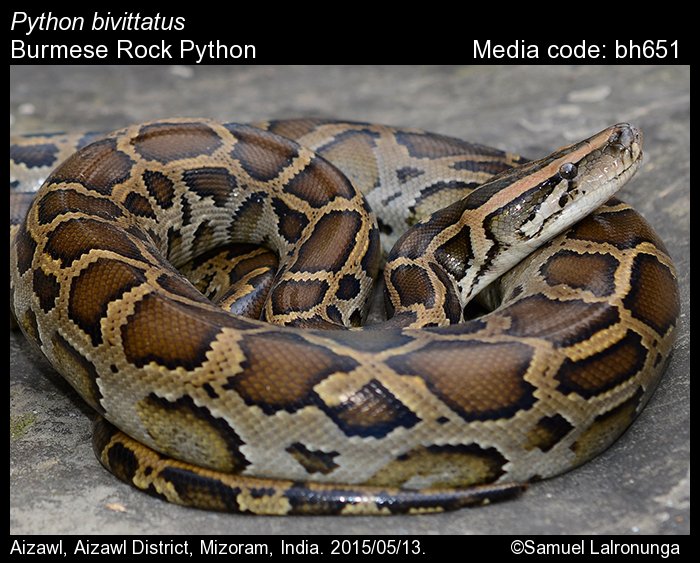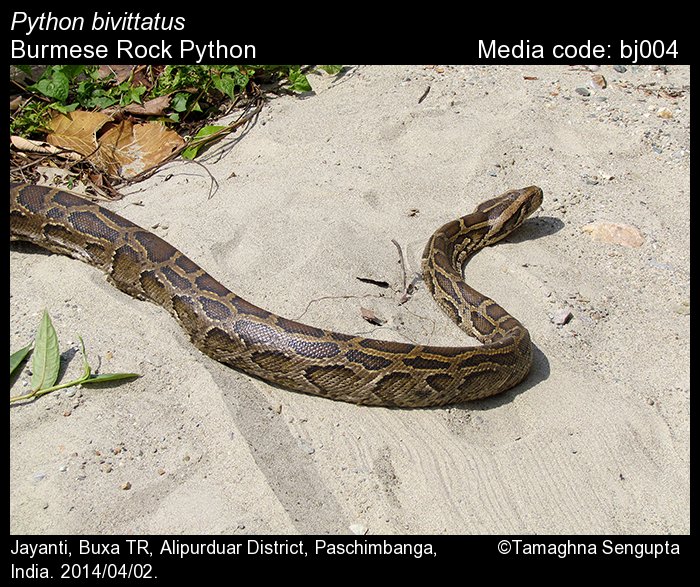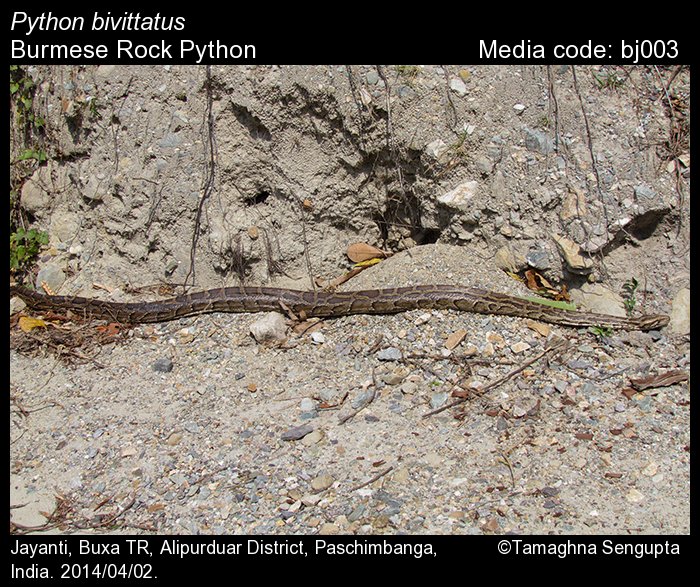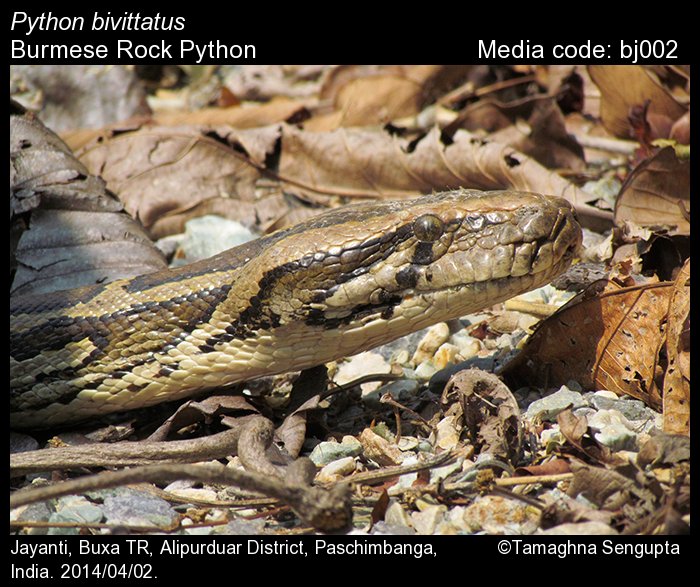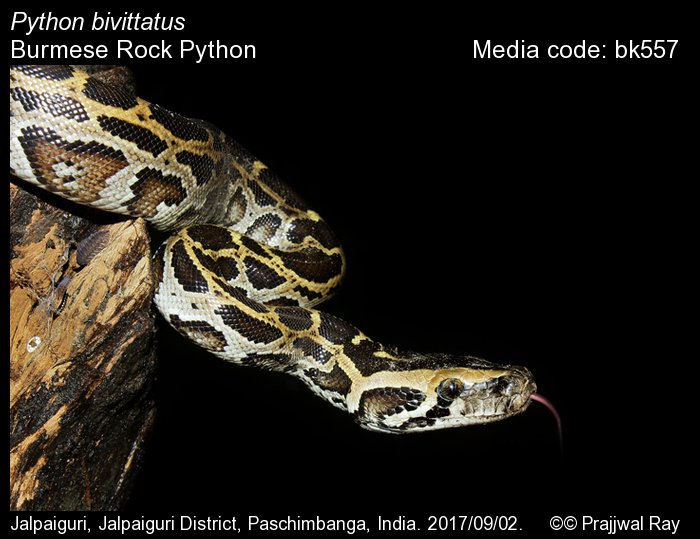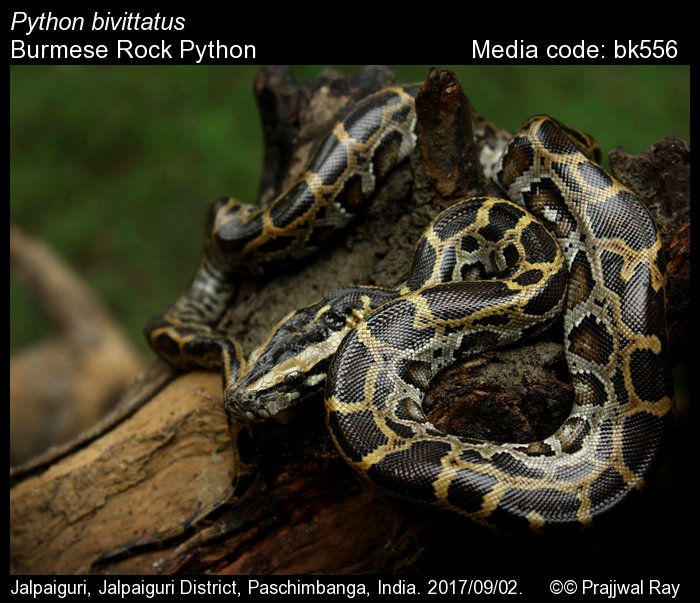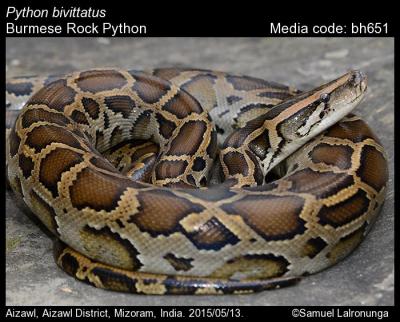
Subspecies in India
Taxonomic Information
Conservation and Special status
Photo Gallery and Species Biology
Type Locality: Java
Rare, known to be occurred in North-eastern India, West Bengal, Uttar Pradesh, and Uttarakhand states (Nawab & Srivastava, 2008; Stuart et al., 2012; Joshi & Singh, 2015; Yadav et al., 2017). The species can be found in forest areas, mangrove forests, rainforests, grasslands, marshes, streams, rivers, and wet rocky areas. The populations of the species have assessed as “declining” in the status (Stuart et al., 2012).
Conservation Status:
The population of the species has declined due to traditional medicine, pet trade and habitat degradation (Stuart et al., 2012).
| State | Jan | Feb | Mar | Apr | May | Jun | Jul | Aug | Sep | Oct | Nov | Dec | No date |
|---|---|---|---|---|---|---|---|---|---|---|---|---|---|
| Andaman and Nicobar Islands | |||||||||||||
| Andhra Pradesh | |||||||||||||
| Arunachal Pradesh | |||||||||||||
| Assam | |||||||||||||
| Bihar | |||||||||||||
| Chandigarh | |||||||||||||
| Chhattisgarh | |||||||||||||
| Dadra & Nagar Haveli | |||||||||||||
| Daman & Diu | |||||||||||||
| Delhi | |||||||||||||
| Goa | |||||||||||||
| Gujarat | |||||||||||||
| Haryana | |||||||||||||
| Himachal Pradesh | |||||||||||||
| Jammu and Kashmir UT | |||||||||||||
| Jharkhand | |||||||||||||
| Karnataka | |||||||||||||
| Kerala | |||||||||||||
| Ladakh UT | |||||||||||||
| Lakshadweep | |||||||||||||
| Madhya Pradesh | |||||||||||||
| Maharashtra | |||||||||||||
| Manipur | |||||||||||||
| Meghalaya | |||||||||||||
| Mizoram | 1 | ||||||||||||
| Nagaland | |||||||||||||
| Odisha | |||||||||||||
| Paschimbanga | |||||||||||||
| Pondicherry | |||||||||||||
| Punjab | |||||||||||||
| Rajasthan | |||||||||||||
| Sikkim | |||||||||||||
| Tamil Nadu | |||||||||||||
| Tripura | |||||||||||||
| Uttar Pradesh | |||||||||||||
| Uttarakhand | |||||||||||||
| West Bengal | 1 | 2 | |||||||||||
| Total | 1 | 1 | 2 |
Other Notes
Page citation
Anonymous 2025. Python bivittatus Kuhl, 1820 – Burmese Rock Python. In Kamdar, A. and K. Kunte. (Chief Editors). Butterflies of India, v. v.1.26. Published by the Indian Foundation for Butterflies. URL: https://www.indianreptiles.org/python-bivittatus, accessed 2025/10/31.
